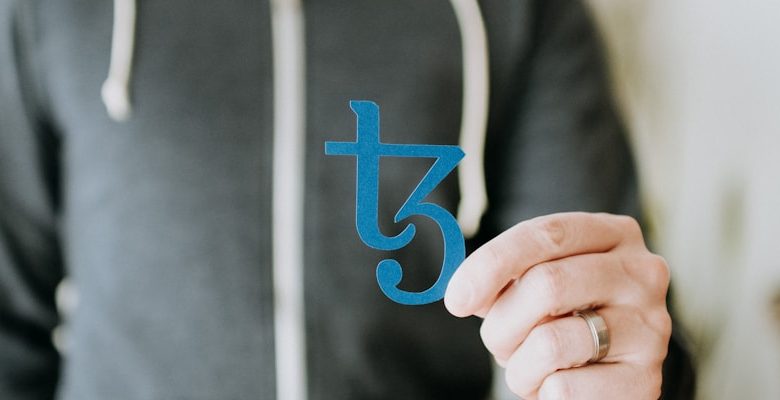How Does Blockchain Ensure Security and Transparency?

- Understanding the basics of blockchain technology
- The role of cryptography in securing blockchain
- Exploring the concept of decentralization in blockchain
- Benefits of transparency in blockchain transactions
- Challenges and solutions for blockchain security
- Real-world applications of blockchain technology
Understanding the basics of blockchain technology
Blockchain technology is a decentralized, distributed ledger that records transactions across a network of computers. Each transaction is verified by network participants, or nodes, before being added to a block. Once a block is filled with transactions, it is added to the chain of blocks, creating a secure and transparent record of all transactions.
The key components of blockchain technology include cryptographic hash functions, consensus algorithms, and distributed networks. Cryptographic hash functions are used to securely encrypt data, ensuring the integrity of transactions. Consensus algorithms enable network participants to agree on the validity of transactions, preventing fraud and ensuring the security of the blockchain. Distributed networks ensure that no single entity has control over the blockchain, making it resistant to censorship and tampering.
Overall, understanding the basics of blockchain technology is crucial for grasping how it ensures security and transparency. By leveraging cryptographic hash functions, consensus algorithms, and distributed networks, blockchain technology provides a secure and transparent way to record transactions. This innovative technology has the potential to revolutionize industries ranging from finance to healthcare, offering unprecedented levels of security and transparency.
The role of cryptography in securing blockchain
Cryptography plays a crucial role in enhancing the security of blockchain technology. By utilizing complex mathematical algorithms, cryptography ensures that data stored on the blockchain remains secure and tamper-proof. This encryption process converts sensitive information into a code that can only be deciphered with the correct key, making it virtually impossible for unauthorized parties to access or alter the data.
One of the key cryptographic techniques used in blockchain security is hashing. Hash functions generate a unique fixed-size string of characters for each block of data added to the blockchain. This hash serves as a digital fingerprint that verifies the integrity of the information contained in the block. Any attempt to modify the data within the block would result in a different hash value, alerting network participants to potential tampering.
Another essential aspect of cryptography in blockchain security is digital signatures. Digital signatures provide a way to authenticate the identity of participants in a blockchain network and ensure the validity of transactions. Each user has a unique private key that is used to create a digital signature for any data they wish to submit. This signature is verified using the user’s public key, confirming that the data has not been altered and was indeed sent by the claimed sender.
Overall, cryptography acts as a robust defense mechanism that safeguards the transparency and integrity of blockchain networks. By leveraging encryption, hashing, and digital signatures, blockchain technology can offer a high level of security that instills trust among users and protects against fraudulent activities. As the blockchain ecosystem continues to evolve, cryptography will remain a cornerstone in upholding the core principles of security and transparency.
Exploring the concept of decentralization in blockchain
Blockchain technology ensures security and transparency through the concept of decentralization. In a blockchain network, data is not stored in a central location but is distributed across a network of computers, known as nodes. This decentralized structure makes it difficult for malicious actors to tamper with the data, as they would need to control the majority of the nodes in the network.
Decentralization also enhances transparency in blockchain systems. Since the data is shared across all nodes in the network, any changes made to the data can be easily detected by other nodes. This transparency helps to build trust among users, as they can verify the integrity of the data stored on the blockchain.
Furthermore, decentralization in blockchain ensures that no single entity has control over the entire network. This reduces the risk of a single point of failure, making blockchain systems more resilient to attacks and outages. By distributing control among multiple nodes, blockchain technology enhances security and ensures the integrity of the data stored on the network.
Benefits of transparency in blockchain transactions
One of the key benefits of transparency in blockchain transactions is the ability to trace the entire transaction history from start to finish. This level of visibility ensures that all participants in the network can verify the validity of each transaction, promoting trust and accountability.
Furthermore, transparency in blockchain transactions helps to prevent fraud and unauthorized activities. Since all transactions are recorded on a public ledger that is immutable and decentralized, it becomes extremely difficult for bad actors to manipulate the data without being detected.
Another advantage of transparency in blockchain transactions is the increased efficiency and speed of cross-border transactions. With traditional banking systems, international transfers can take days to process due to the involvement of multiple intermediaries. However, blockchain technology enables peer-to-peer transactions that can be completed in a matter of minutes, regardless of geographical location.
Challenges and solutions for blockchain security
One of the main challenges facing blockchain technology is security. As blockchain becomes more widely adopted, the risk of cyber attacks and data breaches increases. To address this issue, several solutions have been developed to enhance the security of blockchain networks.
One solution is the use of cryptographic algorithms to secure transactions and data stored on the blockchain. These algorithms help ensure that only authorized users can access and modify the data, reducing the risk of unauthorized tampering or hacking.
Another solution is the implementation of multi-signature technology, which requires multiple parties to sign off on a transaction before it can be validated. This helps prevent fraud and unauthorized transactions by adding an extra layer of security to the blockchain network.
Additionally, regular security audits and testing can help identify and address vulnerabilities in the blockchain network before they can be exploited by malicious actors. By regularly monitoring and updating security protocols, blockchain developers can stay one step ahead of potential threats.
Overall, while blockchain technology presents unique security challenges, there are effective solutions available to mitigate these risks and ensure the integrity and transparency of blockchain networks. By implementing robust security measures and staying vigilant against emerging threats, blockchain can continue to revolutionize industries and provide a secure platform for transactions and data storage.
Real-world applications of blockchain technology
One of the most prominent real-world applications of blockchain technology is in the financial sector. Blockchain has revolutionized the way transactions are conducted, providing a secure and transparent platform for financial exchanges. This technology has enabled faster and more efficient cross-border payments, with reduced fees and increased security. Additionally, blockchain has been used for digital identity verification, making it easier for individuals to prove their identity without compromising their sensitive information.
Another key area where blockchain technology has made a significant impact is supply chain management. By utilizing blockchain, companies can track the movement of goods from the manufacturer to the consumer in a transparent and secure manner. This has helped in reducing fraud, ensuring product authenticity, and improving overall efficiency in the supply chain process. Additionally, blockchain has been used in the food industry to trace the origin of products, making it easier for consumers to make informed decisions about the food they consume.
Blockchain technology has also been applied in the healthcare industry to secure patient data and streamline the sharing of medical records between healthcare providers. By storing patient records on a blockchain network, sensitive information is protected from unauthorized access, ensuring patient privacy and data security. This has led to improved coordination of care, reduced medical errors, and enhanced patient outcomes.
Moreover, blockchain technology has found applications in voting systems to ensure secure and transparent elections. By recording votes on a blockchain network, election results can be verified in real-time, reducing the risk of fraud and manipulation. This has the potential to increase voter trust in the electoral process and strengthen democracy.
In conclusion, blockchain technology has transformed various industries by providing security and transparency in transactions, data management, and record-keeping. Its decentralized and immutable nature has made it a powerful tool for enhancing trust and efficiency in a wide range of applications, paving the way for a more secure and transparent future.



